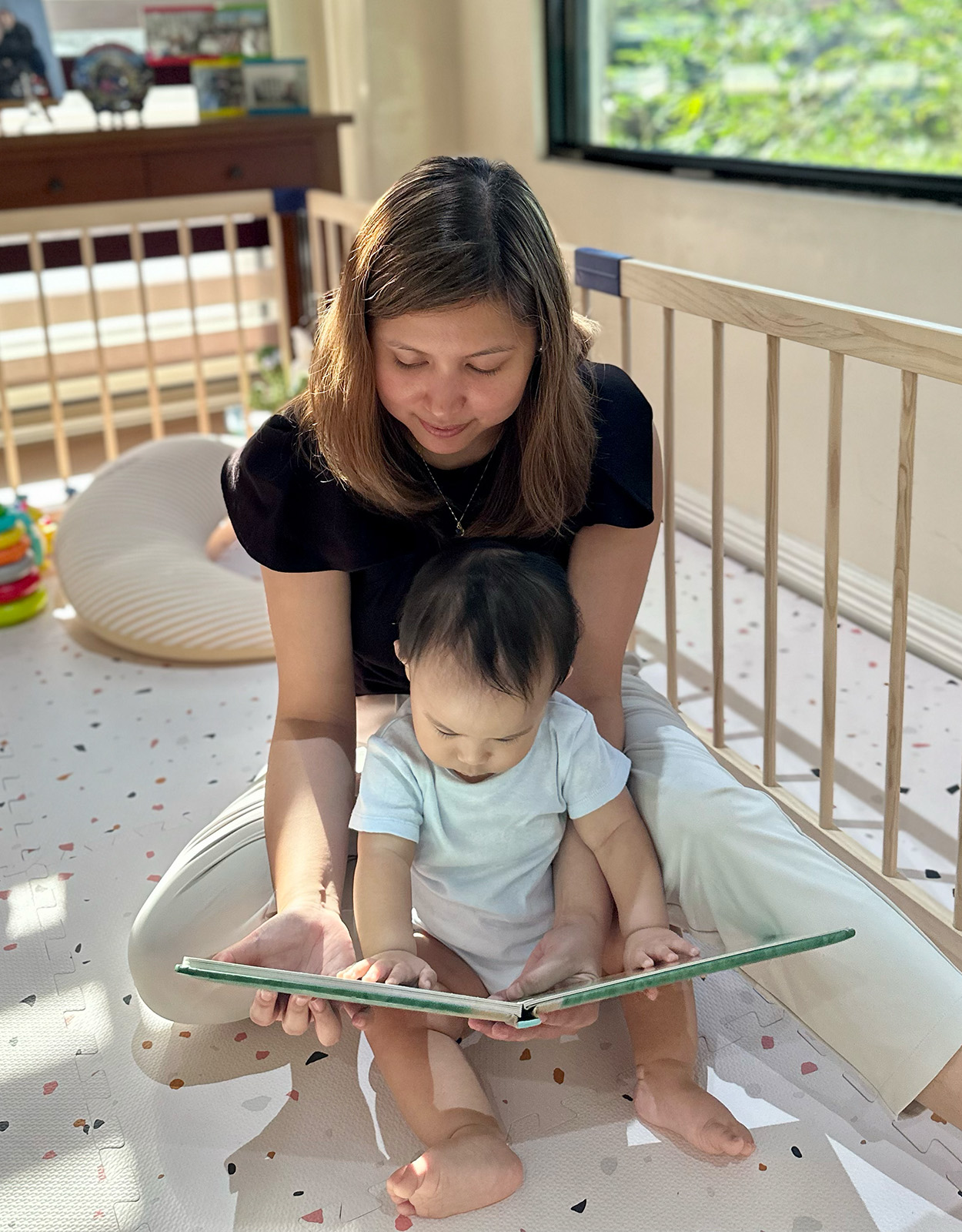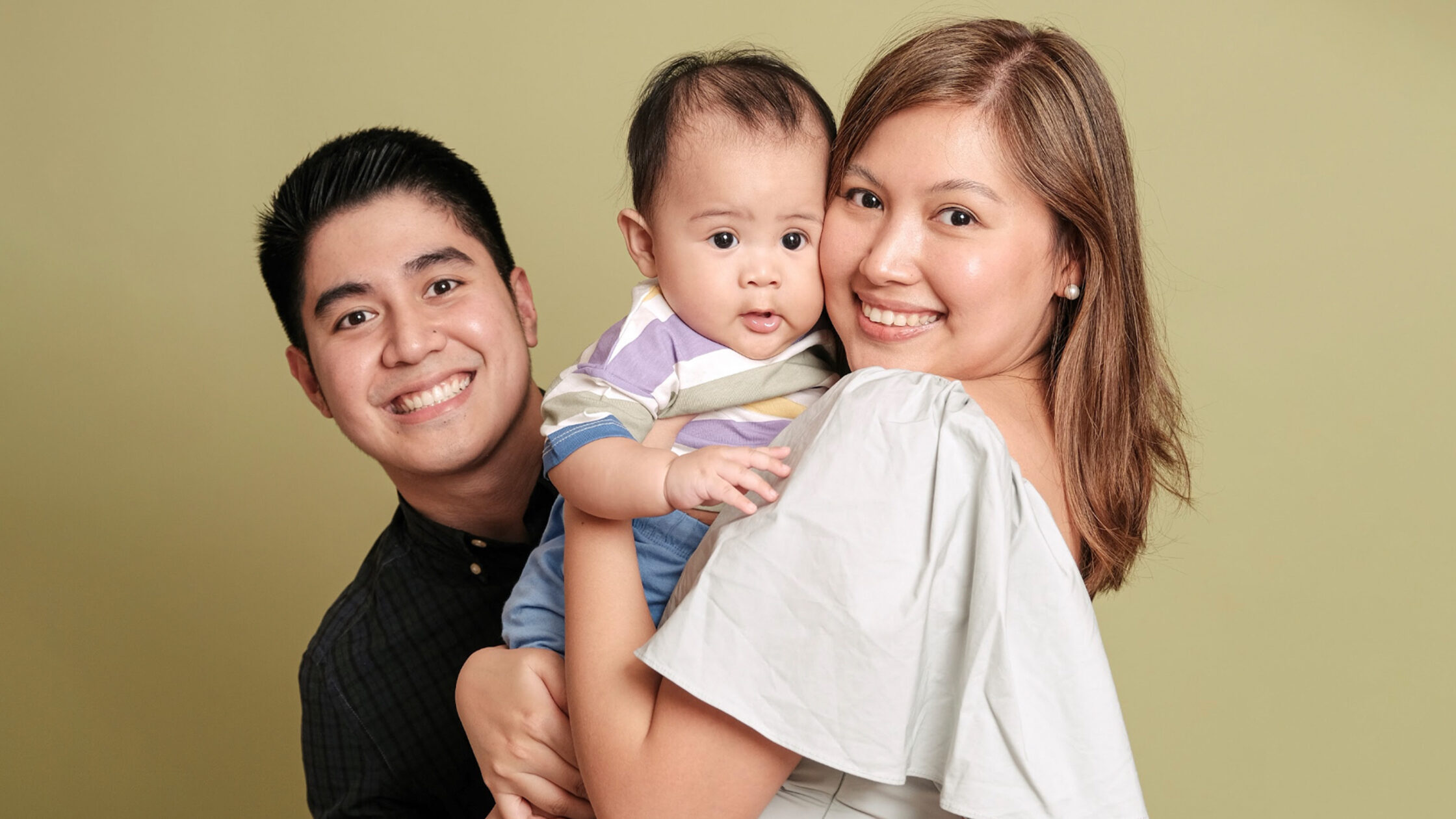LIST: Developmental Milestones in Infants According to a Pediatrician
As parents, we always monitor our child’s developmental milestones. So we sat down with a pediatrician who told us what to look out for!
Developmental milestones refer to the essential skills and abilities that children should reach at specific ages. It encompasses physical, cognitive, language, social, and emotional aspects of growth. These milestones serve as vital indicators of a child’s healthy development and provide crucial insights into their progress. Therefore, regularly consulting with a pediatrician is important as they possess the expertise to monitor and assess a child’s developmental trajectory accurately. Early detection of any delays or concerns enables timely intervention. So it fosters optimal development and sets the foundation for a thriving future.
Modern Parenting sat down with Dr. Erika Andrea Resurreccion Akiat, also known as Pedia Mom Erika. She’s a General Pediatrician with an undergrad in Occupational Therapy (OT) and, to top it off, is a first-time mom to a baby boy.
“As a pediatrician, I’ve had the privilege of caring for children. And with my background in OT, I bring a unique perspective to my practice, focusing not only on their medical needs but also on their overall development and well-being,” she shares.

Key Milestones in a Child’s Development During the First Year
Dr. Erika explains that developmental milestones fall into five categories of development called domains. These are specifically Motor, Language/Communication, Socio-Emotional, Cognitive, and Adaptive/Self-Help. The first year of life is a period of immense growth and learning! So here are some of the usual milestones that she looks for during a particular month:
2 months
- Social/Emotional: Looks at your face and smiles when you talk to or smile at him or her
- Language/Communication: Makes sounds other than crying
- Cognitive: Watches you or objects move
- Motor: Holds head up when on tummy and opens hands briefly
Adaptive/Self-Help: Opens mouth at the sight of a bottle
4 months
- Social/Emotional: Chuckles
- Language/Communication: Makes sounds like “ooo” and “aaah” (cooing), makes sounds back when you talk to him or her, and turns head towards the sound of your voice
- Cognitive: Looks at his or her hands with interest
- Motor: Holds head steady without support when you are holding him or her and brings hands to mouth
Adaptive: Briefly holds on to the breast/bottle
6 months
- Social/Emotional: Likes to look at himself in the mirror and can laugh
- Language/Communication: Takes turns making sounds with you, blows “raspberries” (sticks tongue out and blows), and makes squealing noises
- Cognitive: Puts things in his or her mouth to explore them and reaches to grab toys
- Motor: Rolls from tummy to back, pushes up with straight arms when on tummy, and leans on hands to support himself when sitting
Adaptive: Feeds self with crackers and can hold a bottle
9 months
- Social/Emotional: Shy, clingy, or fearful around strangers, looks when you call his or her name, abd reacts when you leave (looks, reaches for you, or cries)
- Language/Communication: Reduplicative babbling (like mamamama) and lifts arms up to be picked up
- Cognitive: Looks for objects when dropped out of sight and bangs two things together
- Motor: Sits without support, uses fingers to “rake” food toward himself/herself, and moves things from one hand to the other hand
Adaptive: Bites on a cookie and chews on it
12 months
- Social/Emotional: Plays games with you (like pat- a-cake)
- Language/Communication: Waves “bye-bye,” calls a parent “mama” or “dada” or another special name, understands “no” (pauses briefly or stops when you say it)
- Cognitive: Puts something in a container like a block in a cup
- Motor: Walks while holding onto furniture and picks things up between thumb and pointer finger
- Adaptive: Fingerfeeds part of a meal
Some children may achieve certain milestones earlier or later than the average, but still within near normal range. These milestones can be affected by other factors such as cultural differences, especially in the adaptive or self-help domain.
These normative milestones were also lifted from the AAP Evidence-Informed Milestones for Developmental Surveillance Tools, PEDIATRICS Volume 149, number 3, March 2022

Warning Signs That May Indicate a Developmental Delay and Potential Concerns
Dr. Erika shares that it’s important to be knowledgeable about these milestones because if you notice that your child is struggling to achieve a particular skill, you can promptly discuss your observations with your doctor. This early communication allows for timely screening, evaluation, and if needed, early intervention.
The Centers for Disease Control and Prevention’s (CDC) Learn the Signs. Act Early. Program previously had a list of warning signs or red flags but was recently removed. This approach aims to discourage the “wait-and-see” mindset and reduce confusion by merging milestones and warning signs into a single checklist without redundancies.
“Although personally, there are certain red flags at any age that may warrant a doctor’s checkup. These are significant loss of skills, lack of response to sound or visual stimuli, poor interaction with adults or other children, lack of or limited eye contact, differences between right and left sides of the body in strength, a child who has no muscle tone or is too rigid or tense, and unusual repetitive or atypical movements.”

How Parents Can Support and Encourage Their Child’s Social and Emotional Development
As a mom herself, Dr. Erika believes that it is important to create a loving and nurturing environment at home. This involves establishing a safe space where your child feels secure and loved, offering positive reinforcement of attention, hugs, and verbal affirmation.
“Provide opportunities for social interaction with children their age! Arrange playdates, engage in group activities, and support their efforts to build friendships, fostering social connections,” she adds.
“For those with toddlers, you can establish reasonable rules and expectations, and communicate them clearly to your child. Consistency helps them understand boundaries and develop self-discipline. Help your child understand and care for the feelings of others by being a model of compassionate behavior. Guide your child in resolving conflicts peacefully and finding constructive solutions.”
“In older children, open communication can be of great strength. Be a good listener and encourage your child to express their own feelings, needs, opinions, and thoughts openly. Validate their emotions and provide guidance when needed, helping them develop effective communication skills.”
“Lastly, be a positive role model! Parents and caregivers should model healthy social and emotional skills, such as active listening, patience, and effective management of emotions. This greatly influences their own development. For the first year of their life, our child learns through mirroring us.”

Activities and Games to Help Enhance Fine Motor Skills
There are many activities and games parents can do with their children to help develop their motor skills. Dr. Erika suggests catering to specific ones based on their developmental stage.
“For newborns, encourage grasping by providing soft light-weight toys with different textures and shapes. For babies, engage in finger play and rhymes to stimulate finger movements and coordination, as well as provide stackable toys and shape sorters. Toddlers can benefit from playing with building blocks, which promote hand-eye coordination and problem-solving. Introducing puzzles and pegboards is also helpful. For preschoolers, drawing and coloring with crayons, markers, and coloring books can enhance fine motor control, while playing with play dough develops hand strength and creativity.”
She reminds parents to ensure a safe and supervised environment during these activities and to provide age-appropriate materials for their child’s optimal development.

Strategies for Managing Common Behavioral Challenges
Behavioral challenges such as temper tantrums or separation anxiety are very common among little children. “First and foremost, try to regulate your own emotions and stay calm and composed. Your child looks to you for guidance and modeling appropriate behavior,” Dr. Erika advises.
“For temper tantrums, recognize and acknowledge your child’s feelings. Let them know that it’s normal to feel upset or anxious, and that you understand and validate their emotions. Give them the opportunity to feel the emotions, regulate, and manage them if they can. You can make an area of the house a safe space for you to accompany your child to settle down and process their feelings. Once the tantrum has trickled down a bit, you can discuss in simple words what happened and what made them upset. Empower them by giving them age-appropriate choices that will allow them to feel more in control and minimize power struggles. For example, ‘I’m sorry we can’t go outside today. Would you like to play some LEGO or help me make dinner?’ This helps them feel more in control and minimizes power struggles.”
“For separation anxiety, practice gradual separations. Start with short periods of separation and gradually increase your time apart. For babies, make sure to make it a positive experience by waving and enthusiastically saying goodbye. Sometimes, it also helps to leave something comforting that they can hold on to. For older children, take time to explain why you’ll be away. Offer reassurance that you will be back, and talk about what you both will do when you return.”
In general, having routines can help reduce behavioral challenges. Establish consistent daily schedules and communicate upcoming events or transitions in advance. This provides a sense of predictability and can reduce anxiety in children.

How Parents Can Promote a Healthy Lifestyle for Their Children
Promoting a healthy lifestyle for children is a fundamental responsibility that parents bear to ensure their little ones grow up strong, happy, and well-equipped for life’s challenges. There are several impactful ways parents can achieve this goal.
“It all boils down to modeling the lifestyle that you want your child to have,” says Dr. Erika. “If you want your child to eat healthy, you’ve got to eat healthy!”
“Getting kids to eat healthy is all about exposure and not force. Provide a variety of whole foods for them to try. You’ll be surprised at what your child enjoys eating! And as difficult as it is, limit the amount of junk food in your house.”
“You can’t enforce a ‘no screen time’ rule if you’re always scrolling on the phone. Make physical activity part of your family’s daily routine and show exercise in a positive light. When you teach them how important a healthy lifestyle is by making it part of a family routine, your child is more likely to maintain the habit throughout his or her life.”
While children can be receptive to being told things or even guided through doing it themselves, a large portion of their behavioral development is based on imitation or observational learning. So parents have a huge opportunity to become a positive influence.

Supporting Parents in Their Child’s Developmental Milestones
Dr. Erika provides essential tips on how to effectively support and nurture every child’s developmental milestones.
Consistency is key
“If you would like to teach a skill, mold a behavior, or remove unwanted behaviors, you’ve got to do it appropriately and repetitively.”
Play with your child every single day
“I highly encourage you to prioritize good-quality play. Through play, children are like receptive sponges where they learn every single thing like language, behavior, problem-solving, and social skills. You can foster the development of upcoming milestones through play!”
Choose developmentally appropriate toys
“These should match a child’s age, interests, and abilities. Also, choose toys that meet safety standards and have age-appropriate warnings and labels to prevent accidents or injuries.”
Establish good sleeping habits
“Sleep affects overall health, growth, behavior, and development.”

Nurturing Growth by Monitoring Developmental Milestones
Monitoring a child’s developmental milestones is an indispensable aspect of responsible parenting and comprehensive healthcare. By closely observing their progress, parents and caregivers can detect any potential delays or concerns early on, facilitating timely intervention and appropriate support. This proactive approach not only aids in addressing developmental challenges but also enhances the child’s overall well-being. By investing time and effort into monitoring developmental milestones, parents can ensure that their children are given the best opportunities to thrive, fostering a strong foundation for a bright and promising future.
More about child development and milestones:
Why a Magna Carta for Child Development Workers is Being Pushed
7 Screen-Free Activities That Can Help with Child Development
Filipino Tradition and Gentle Parenting According to a Child Development Coach









